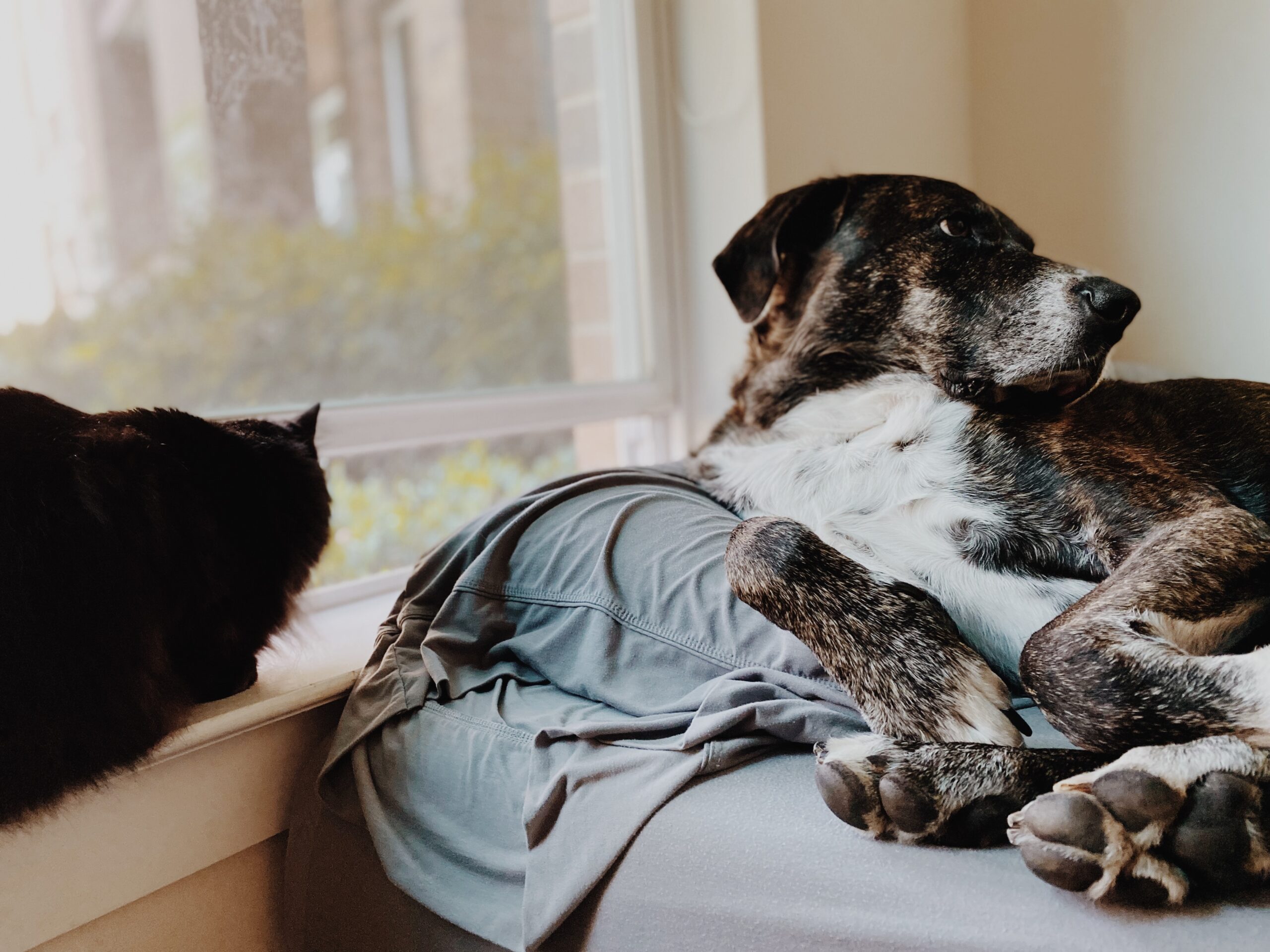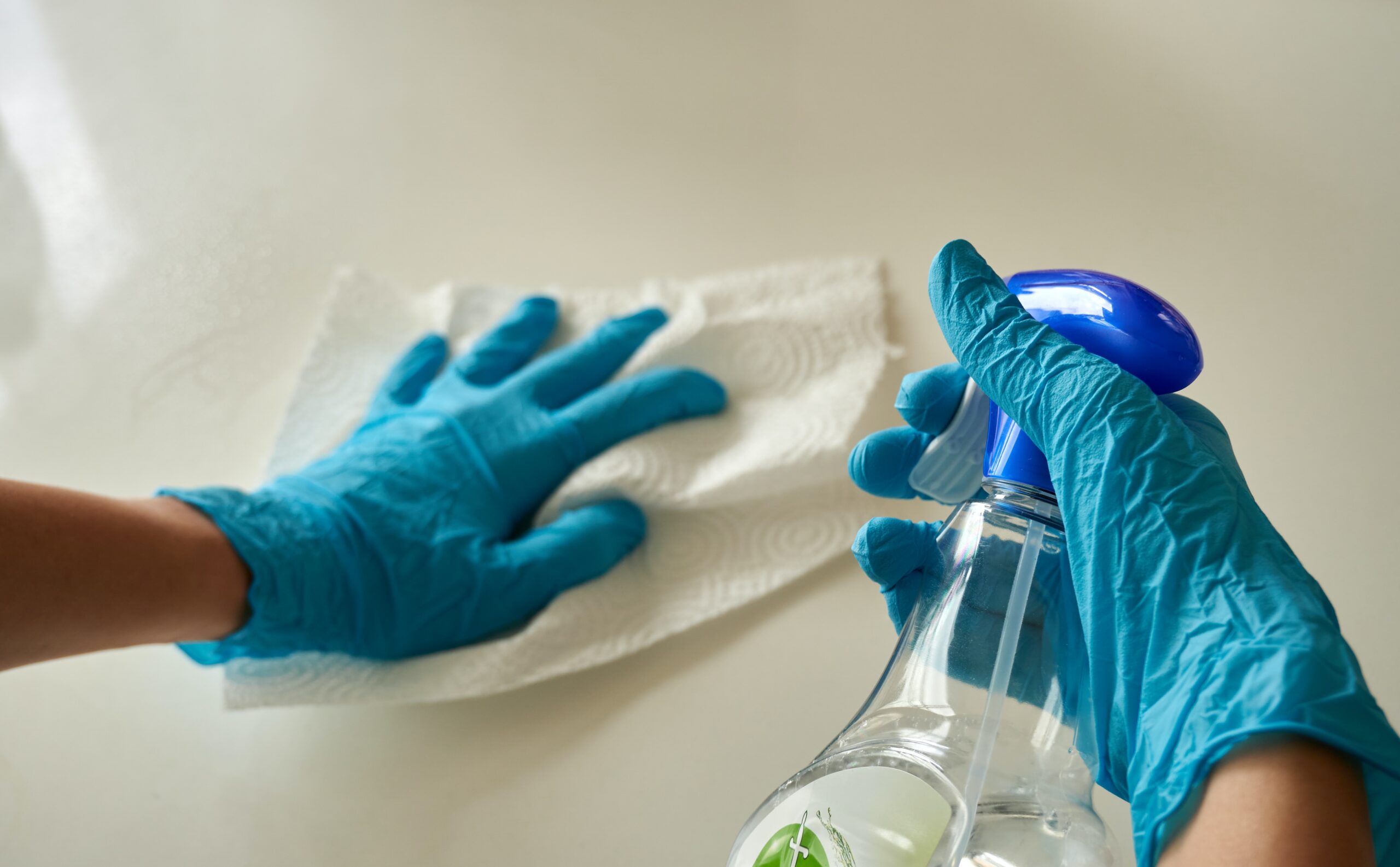Pets frequently roll around in the soil outside and track it into the house. Their fur is everywhere on the sofas and mattresses. And occasionally, they may have an accident or become ill on the rug. Numerous conventional cleaning products contain substances that are hazardous around canines and cats. Even “green” or “natural” products can cause skin, respiratory, or gastrointestinal irritation, as well as internal hemorrhaging. Fortunately, you can maintain your home clean and your pets safe by employing these cleaning techniques.
1. Establish a pet cleansing station
Create a cleaning station in your vestibule, mudroom, or by a side or back door to prevent mess at its source. You wouldn’t walk through your home in muddy footwear, so make sure you have everything you need to wipe your dog’s paws clean after a walk close to the door. You can have a straightforward, apartment-friendly arrangement with leash hooks and a machine-washable rug for wiping paws. Have more space? Build an elaborate washing basin. Here is a fast checklist for any cleaning station in the home:
- Attach hooks near the doorways to store leashes, waste bags, and other walking accoutrements in a tidy manner.
- Place a doormat at each entrance so that you and pet can clean your feet before entering the home. Place a cloth or washable rug on top of a bulky, difficult-to-clean entryway rug that you can easily remove and launder.
- Towel wicker basket. Keep a decorative basket filled with towels near the door to clean your dog of any dripping debris. If there is no space for a basket of towels, keep some packs of paw wipes near the door for a fast clean of the paws.
- Washing basin. If you have a larger budget and are willing to do some remodelling, you can install a washing basin in the mudroom. This bathing station should have everything you need to cleanse your dog’s fur after a particularly muddy excursion, including sprayer and drain plumbing.
2. Make an Investment in a Quality Vacuum, Microfiber Mop, and Lint Brush
Let’s be straightforward. No matter how much you groom and brush your dog, there will be fur and hair throughout your home. On the floor, couch, garments, and beds—virtually everywhere! In order to maintain a tidy home while living with a dog, you need the proper cleaning supplies.
3. Establish a routine cleaning schedule
A simple way to keep your pets and your home smelling fresh and clean is to give your pet frequent baths and sanitize their belongings, including bedding, leashes, and anything else they may use.
This is not only beneficial for your pet’s health, but it also reduces the amount of hair and dander in your residence and on your furniture.
4. Eliminating urine stains
While we all recognize the difficulties of housebreaking a new puppy, accidents can also occur with cats, rabbits, and other small animals.
Urine and vomit stains must be cleaned promptly and thoroughly to maintain hygiene, eradicate odors, and reduce the likelihood that the pet will return to the same spot. Pet urine is potent, and you may believe you have eliminated all traces of it. But frequently, uric acid persists. Enzymes that neutralize uric acid are frequently the most effective treatments. Always absorb as much urine as feasible prior to application of the solution.
If you are concerned about accidents that you may have missed, you can invest in an ultraviolet light that will illuminate the problem areas.
When you first bring your dog, cat, rabbit, or even a bird that spends a lot of time cage-free into your home, it should be a top priority to work diligently on toilet training to reduce the number of accidents. If your dog, cat, or rodent is prone to spraying or scent marking, you may wish to discuss spaying or neutering with your veterinarian.
5. Regularly clean bedding and living quarters
Whether you are washing your dog’s or cat’s bedding or clearing out an enclosure for a bird, small animal, or reptile, you must maintain a regular cleaning schedule. Dirty cages can contribute to an unpleasant odor in your home, discomfort for your pet, and even the spread of disease and infection.
If your cat uses a litter box, it should be cleansed frequently, and the litter you use can make a significant difference. In addition to containing litter and odors, a hooded litter box provides your companion with more privacy. Vinegar is excellent for dissolving stubborn urine deposits. A bedding material that is absorbent and of high quality can help to reduce offensive odors and reduce the frequency of cleansing. Don’t forget that rabbits can also be litter trained!
Any cage or enclosure must be appropriate in size and safety for your companion. Some designs will more effectively contain errant bedding or droppings than others.
Even though reptiles and fish are among the cleanest pets to keep, their aquariums or vivarium’s can still become smelly and if they become too filthy, they can pose a health risk to your pet. The type of reptile you keep in a vivarium will determine the type of material you use. Coconut fibre is a well-liked, environmentally sustainable option for odor control.
Good cage hygiene is essential for ensuring your bird’s health and preventing foul odors and the accumulation of excess plumage in the home. Check out How to Keep Your House Clean With Pet Birds & Parrots for more information.
Don’t neglect that bowls and toys can harbor bacteria if they are not cleaned regularly. While our pets can be wonderful companions, they can also be smelly, dirty, and contain germs and fleas. Numerous pet owners struggle on a regular basis with pet hair balls, urine stains on the carpet, droppings, shavings, and feathers in the most unexpected locations.
However, this should not deter you from owning a pet; there are many simple methods to keep your pet and your home clean.
6. Keeping pet hair at bay
If you own a dog, cat, rabbit, or other small furry animal that discharges hair, this will likely be your most difficult and time-consuming task.
Regular grooming is important. While it’s true that no amount of grooming can prevent shedding entirely, it can make a significant difference and helps maintain a healthy coat and epidermis.
There are numerous grooming instruments designed specifically for shedding, with the Furminator being one of the most popular.
7. Getting rid of urine stains
While we all recognize the difficulties of housebreaking a new puppy, accidents can also occur with cats, rabbits, and other small animals.
Urine and vomit stains must be cleaned promptly and thoroughly to maintain hygiene, eradicate odors, and reduce the likelihood that the pet will return to the same spot. Pet urine is potent, and you may believe you have eliminated all traces of it. But frequently, uric acid persists. Enzymes that neutralize uric acid are frequently the most effective treatments. Always absorb as much urine as feasible prior to application of the solution.
A home remedy can be effective if you do not have a ready-made solution or if you prefer something as natural as possible. In a clean spray container, combine one cup of white vinegar, one cup of water, and two teaspoons of baking soda.
If you are concerned about accidents that you may have missed, you can invest in an ultraviolet light that will illuminate the problem areas.
When you first bring your dog, cat, rabbit, or even a bird that spends a lot of time cage-free into your home, it should be a top priority to work diligently on toilet training to reduce the number of accidents. If your dog, cat, or rodent is prone to spraying or scent marking, you may wish to discuss spaying or neutering with your veterinarian.
8. Choosing appropriate cleaning and air freshener products
Ensure that the cleaning products you choose are pet-friendly. Always check labels and conduct investigation. Avoid harsh, caustic substances such as chlorine. Some individuals opt to create their own cleaning products. This can be more cost-effective, eco-friendly, and allows you to avoid using toxic or problematic substances. Before using any homemade natural remedies, consult your veterinarian for approval.
Essential oil diffusers are commonly used to refresh the air in the home, but some essential oils can be dangerous to use around animals (cats and birds, for example, are particularly sensitive to them), so it is probably best to find an alternative solution.
To Summarize
Pets are adorable but can be untidy. Whether it’s constant shedding, litter tracked everywhere, or muddy paw prints, they always seem to leave a disaster behind. Having a companion need not be a never-ending chore, thankfully.
Accidents and messes are inevitable, particularly if you have pets! However, canines are members of the family, and they make our lives so much better. With the proper products, cleaning up after your dog or cat need not be a hassle, allowing you to spend more quality time with your furry companion.



